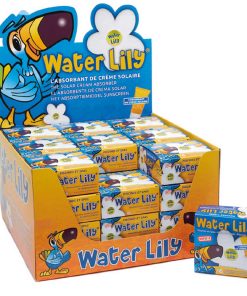-
×
 Plastica Water Lily Display Box of 36 Boxes
1 ×
Plastica Water Lily Display Box of 36 Boxes
1 ×£346.38£277.10
Subtotal: £277.10
Filtration stands as a critical process which ensures hot tub water remains both clean and healthy. Filtration systems operate as the main defense against environmental contaminants through their ability to capture dirt particles and organic substances and other debris.
The filter mechanism allows water to pass through its media while catching solid impurities so clean water continues forward. The pleated design of the filter provides extra surface area which allows it to retain more dirt.
The filter requires frequent cleaning operations to achieve peak performance levels. BISHTA suggests cleaning filters once per week using a garden hose while recommending monthly deep cleaning with a specialist hot tub filter cleaning solution. The power jet washer should never be used for filter cleaning because the jet power would damage the filter’s weave structure thus making it useless for filtration purposes. (1.pdf)
Annual replacement of filters is required however two sets used alternately may extend replacement time to two years.
The proper balance of water chemistry elements ensures both comfortable bathing experiences and extends the life of equipment systems. The three essential water parameters for proper hot tub maintenance include pH levels together with total alkalinity measurements and sanitizer concentration.
The daily monitoring of water quality requires test strip evaluation for sanitizer strength and pH levels. The recommended pH level should remain between 7.0-7.6 and bromine levels should be maintained at 2-4 mg/l while inorganic chlorine must be maintained between 2-4 mg/l and organic chlorine should be kept at 3-5 mg/l.
pH control systems require attention because elevated pH values decrease sanitizer efficiency while producing scaling effects and low pH values lead to corrosion problems. The solution requires pH increaser or reducer depending on the situation.
Sanitizers which include chlorine and bromine work to eliminate dangerous microorganisms from the water. Use built-in tablet dispensers together with maintaining suitable sanitizer levels. The process of switching between Chlorine and bromine sanitizers requires retailer consultation because it poses dangerous chemical reaction risks. (3.pdf)
The weekly inspection involves starting up the jets and waterfalls to observe foaming and water clarity. Resolve foaming and clarity issues by using foam suppressants or clarifiers.
The hot tub requires a surface cleaning session followed by filter replacement with fresh sets each month. The system requires inspection for pH level and sanitizer concentration adjustments.
Perform water changes in the hot tub every 1-3 months according to usage patterns. Before draining the system use a system flush to clean all pipework. The water in UK drinking supply may contain up to 10% of legionella which remains safe to drink although you would not want to heat it up in your hot tub. (3.pdf)
Suspended tiny particles beyond filter capacity cause cloudy water conditions. Address by:
Sanitizer level assessment followed by necessary adjustments.
Shock treatment of the water should be performed to activate sanitizers while oxidizing contaminants.
The system will not function properly unless the filters remain clean and operate correctly.
The use of clarifiers enables the binding of tiny particles into groups which makes their filtration simpler.
The water becomes foamy because of accumulated products together with Total Dissolved Solids. To reduce foaming maintain the following measures:
Before entering the hot tub take a shower to eliminate all impurities from your body.
Bathing suits must be washed using clean water following each swimming session.
High-quality chemical products together with regular shock treatment applications will help reduce foam formation.
Regular opening of the cover helps maintain air circulation throughout the water.
Shock Treatment: Essential for breaking down contaminants and reactivating sanitizers.
Perform weekly and after heavy use.
Non-chlorine shock treatment allows for faster entry into the water.
The water should be inspected for pH level as well as alkalinity and water hardness and bather load following the shock treatment procedure.
Before entering the hot tub wash your body and refrain from applying cosmetics or lotions.
Bathing suits require only clean water for washing after each swim session.
Store the hot tub cover when the hot tub remains unattended.
Regular cleaning of filters should occur monthly but replace them once per year unless using two sets that can be rotated every other year.
The system requires weekly monitoring of water chemistry and shock treatment doses.
An annual professional servicing check is necessary for both optimal performance and safety maintenance.
Hot tub owners who implement these guidelines and stay attentive to maintenance tasks will achieve clean and clear water that creates a relaxing spa experience.
Some products you might be interested in:

Please enter your details below to save your trolley for later. If you have any questions please leave your email address and we will provide a swift response.